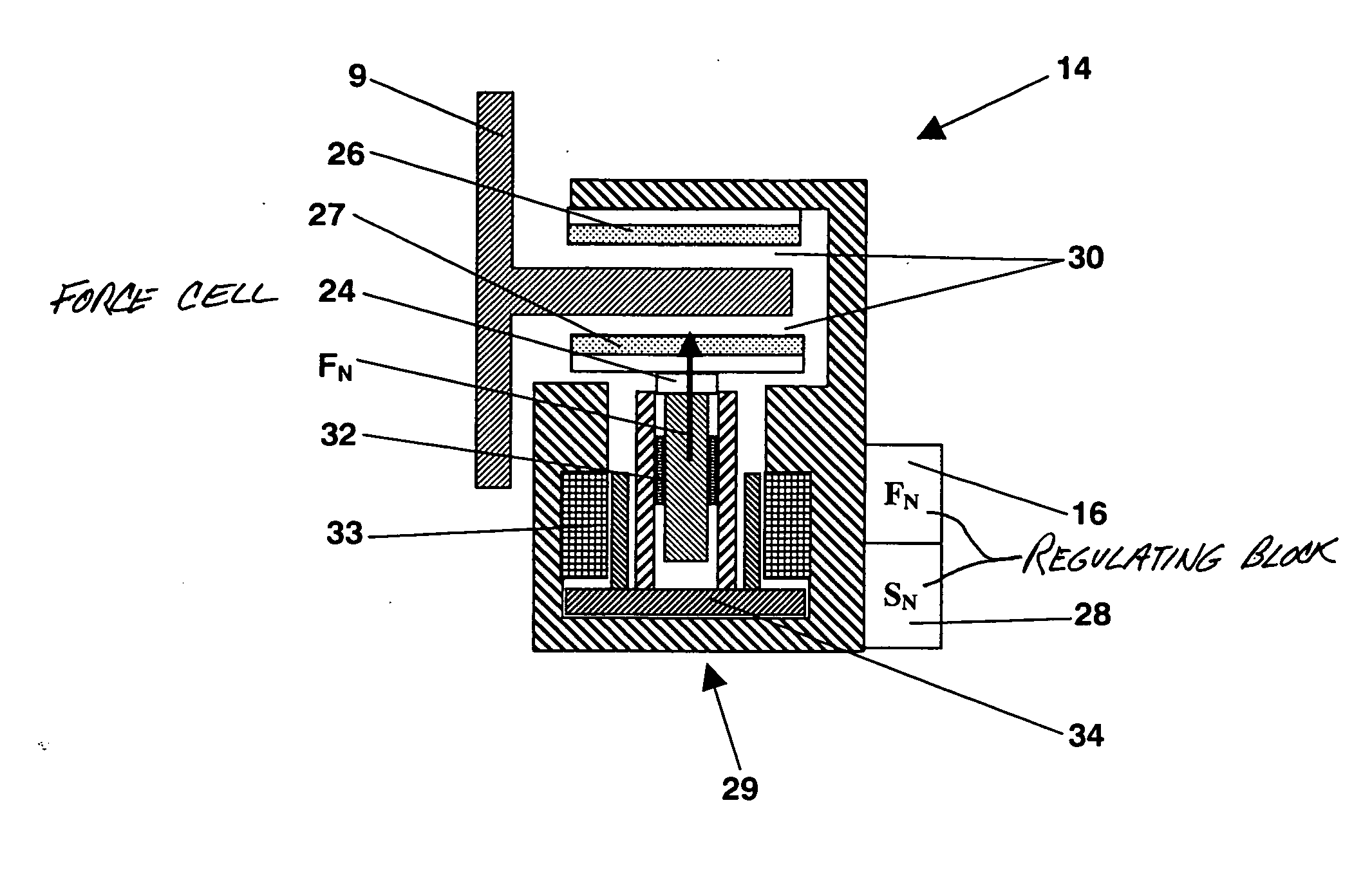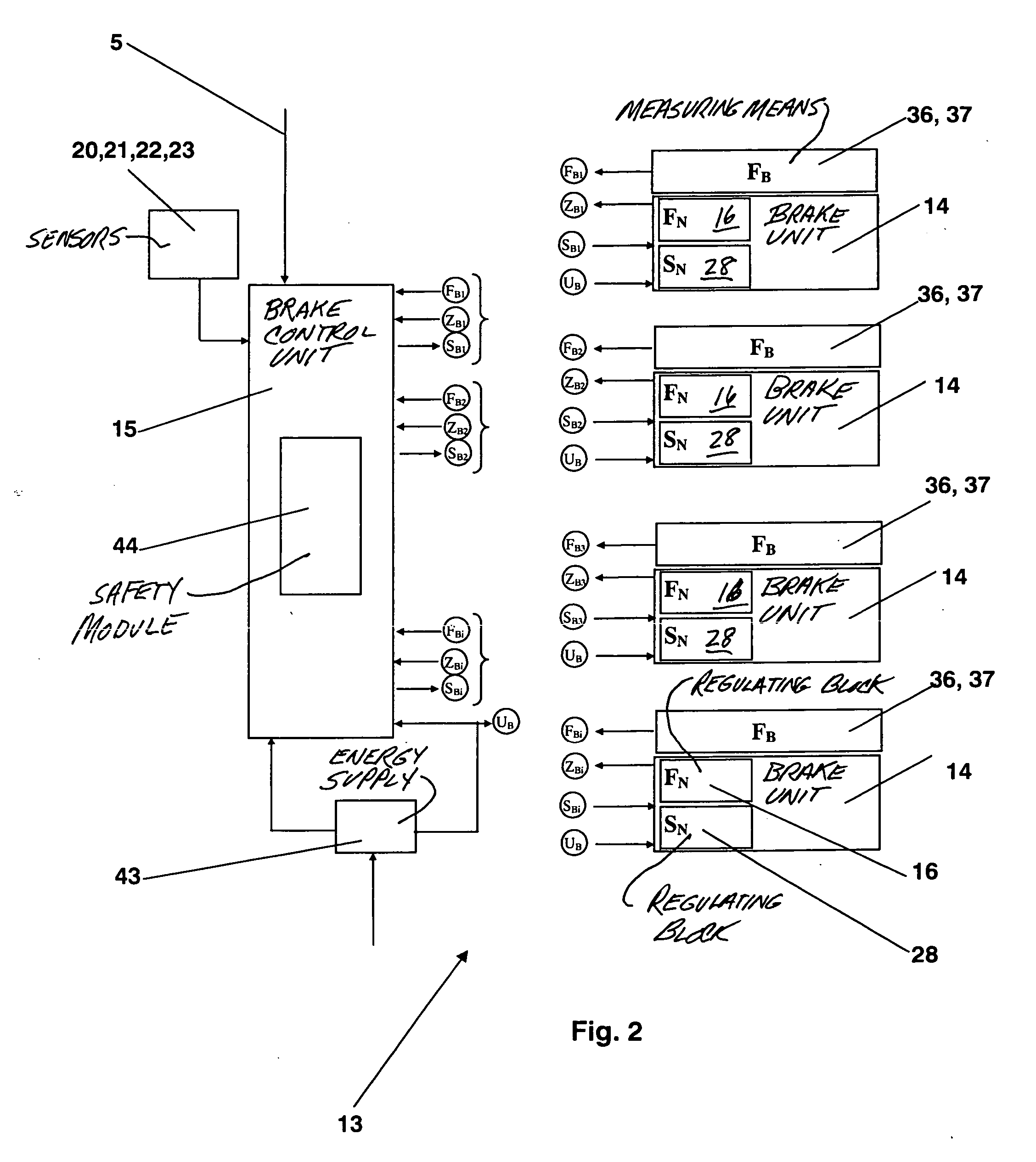Elevator installation with a braking device and method for braking and holding an elevator installation
a technology for elevators and braking equipment, which is applied in the direction of braking systems, lifts, track-braking member co-operation, etc., can solve the disadvantage of increasing the speed in the case of fully laden cars, significant transient process, and insufficient braking equipment for holding elevator cars in a stopped position. , to achieve the effect of low power consumption, low cost and low cos
- Summary
- Abstract
- Description
- Claims
- Application Information
AI Technical Summary
Benefits of technology
Problems solved by technology
Method used
Image
Examples
Embodiment Construction
[0023] An elevator installation 1 consists at least of an elevator car 2 and an elevator drive 10. As illustrated in FIG. 1, the elevator installation 1, for example, further requires a support means 11 and a counterweight 12, wherein the elevator drive 10 drives the support means 11 and thus moves the elevator car 2 and the counterweight 12 in diametrical opposition in an elevator shaft 4. The elevator installation 1 also requires at least one braking equipment 13. The braking equipment 13 holds the stationary elevator car 2—for example, during the loading time at a floor 6—or it brakes the elevator car 2 in an emergency situation—for example, in the case of unexpected opening of the floor access—or it effects safety braking—for example, in the case of failure of the support means 11—of the elevator car 2 which is moving too fast. These different load cases require different braking or holding forces FB.
[0024]FIG. 2 shows a variant of the braking equipment 13, which consists of a ...
PUM
 Login to View More
Login to View More Abstract
Description
Claims
Application Information
 Login to View More
Login to View More - R&D
- Intellectual Property
- Life Sciences
- Materials
- Tech Scout
- Unparalleled Data Quality
- Higher Quality Content
- 60% Fewer Hallucinations
Browse by: Latest US Patents, China's latest patents, Technical Efficacy Thesaurus, Application Domain, Technology Topic, Popular Technical Reports.
© 2025 PatSnap. All rights reserved.Legal|Privacy policy|Modern Slavery Act Transparency Statement|Sitemap|About US| Contact US: help@patsnap.com



